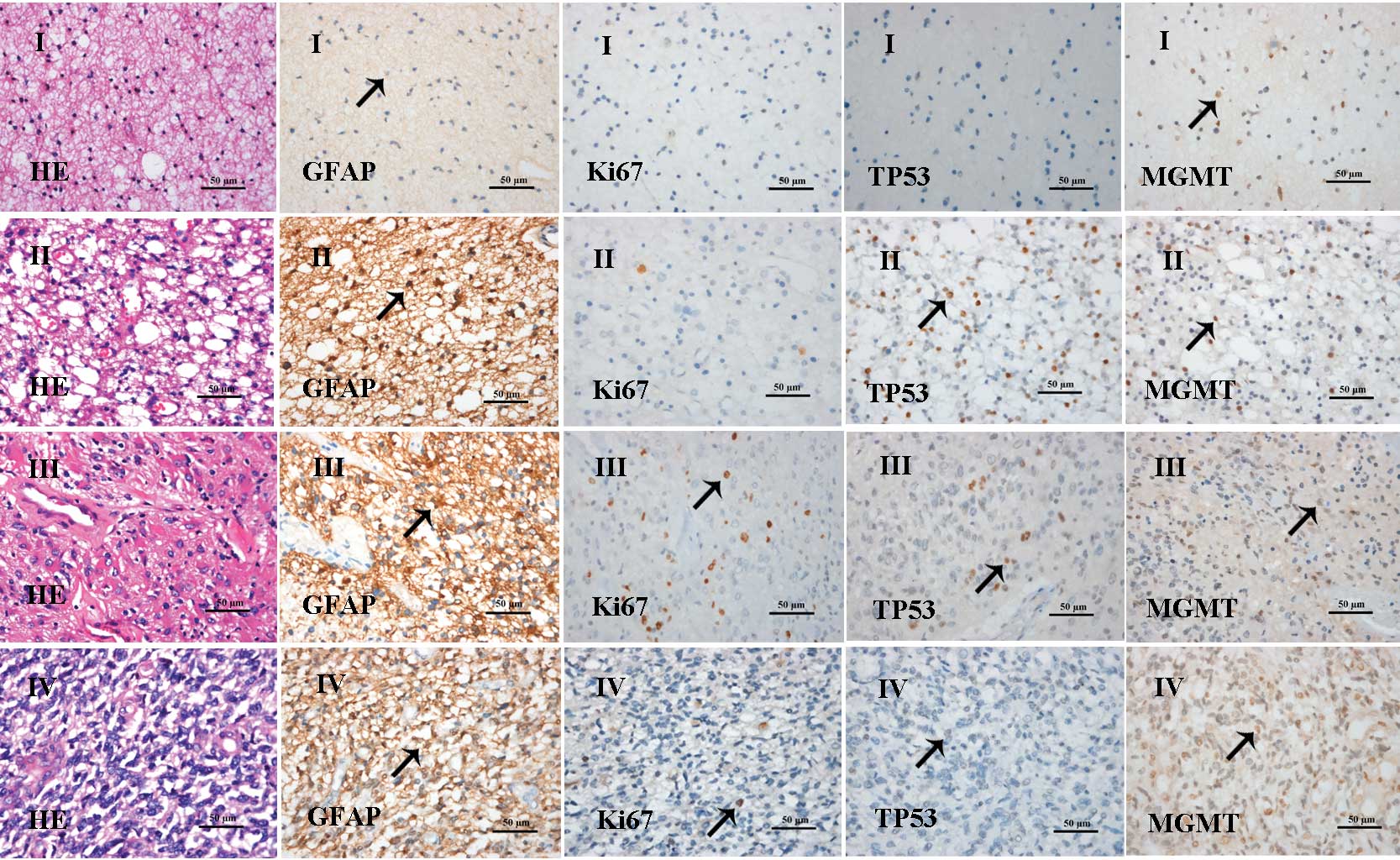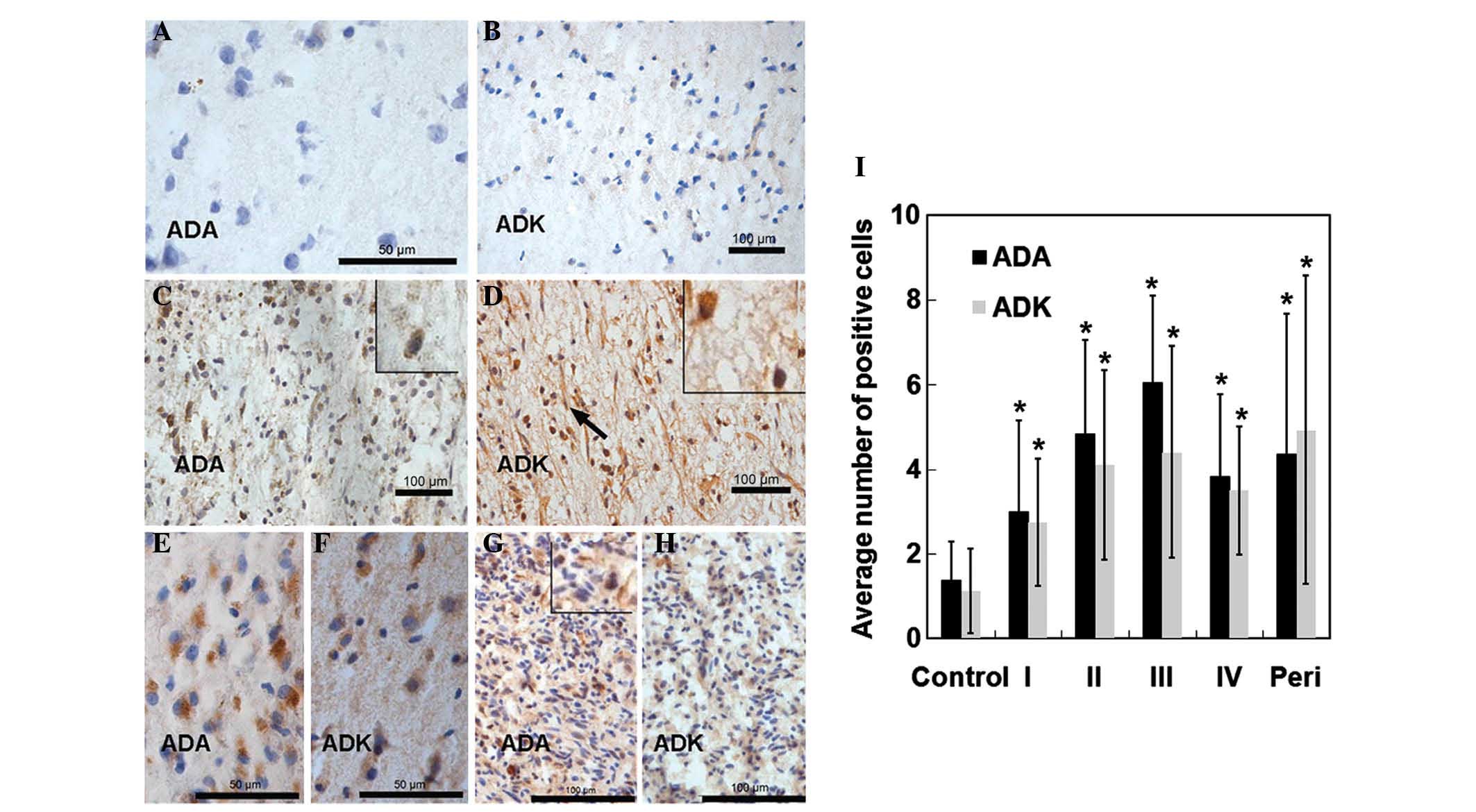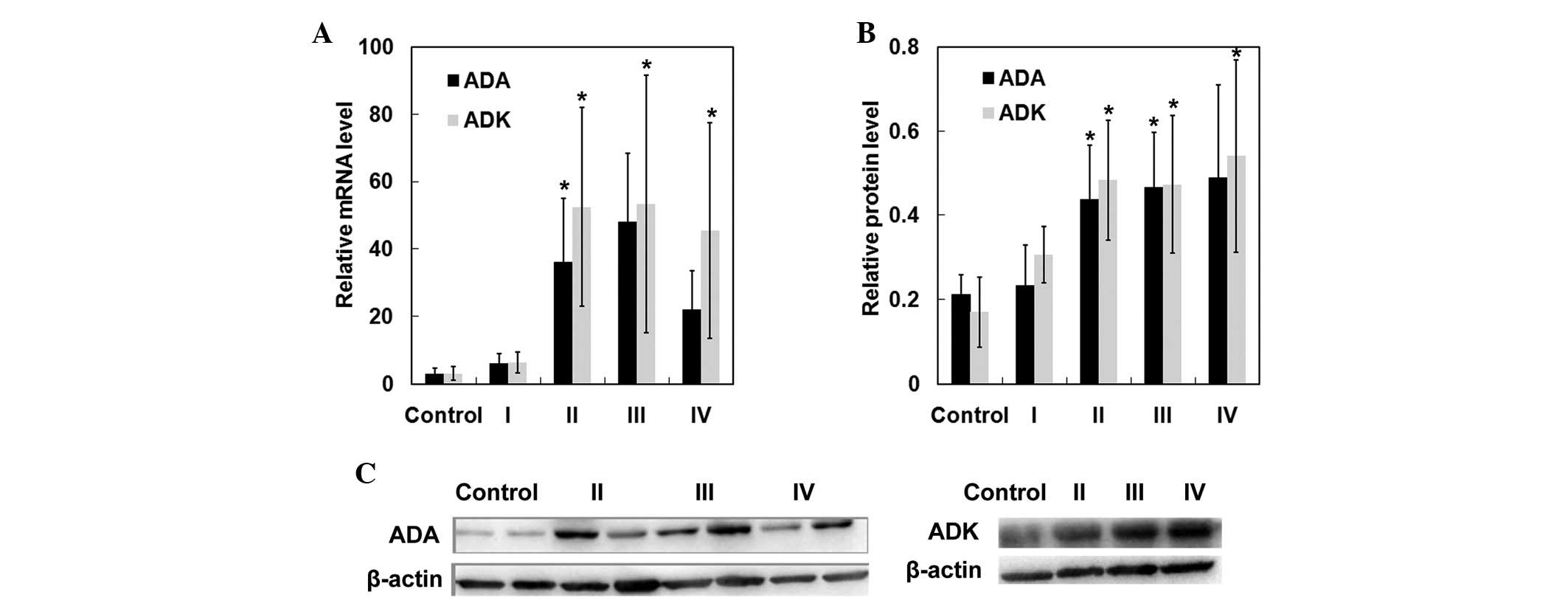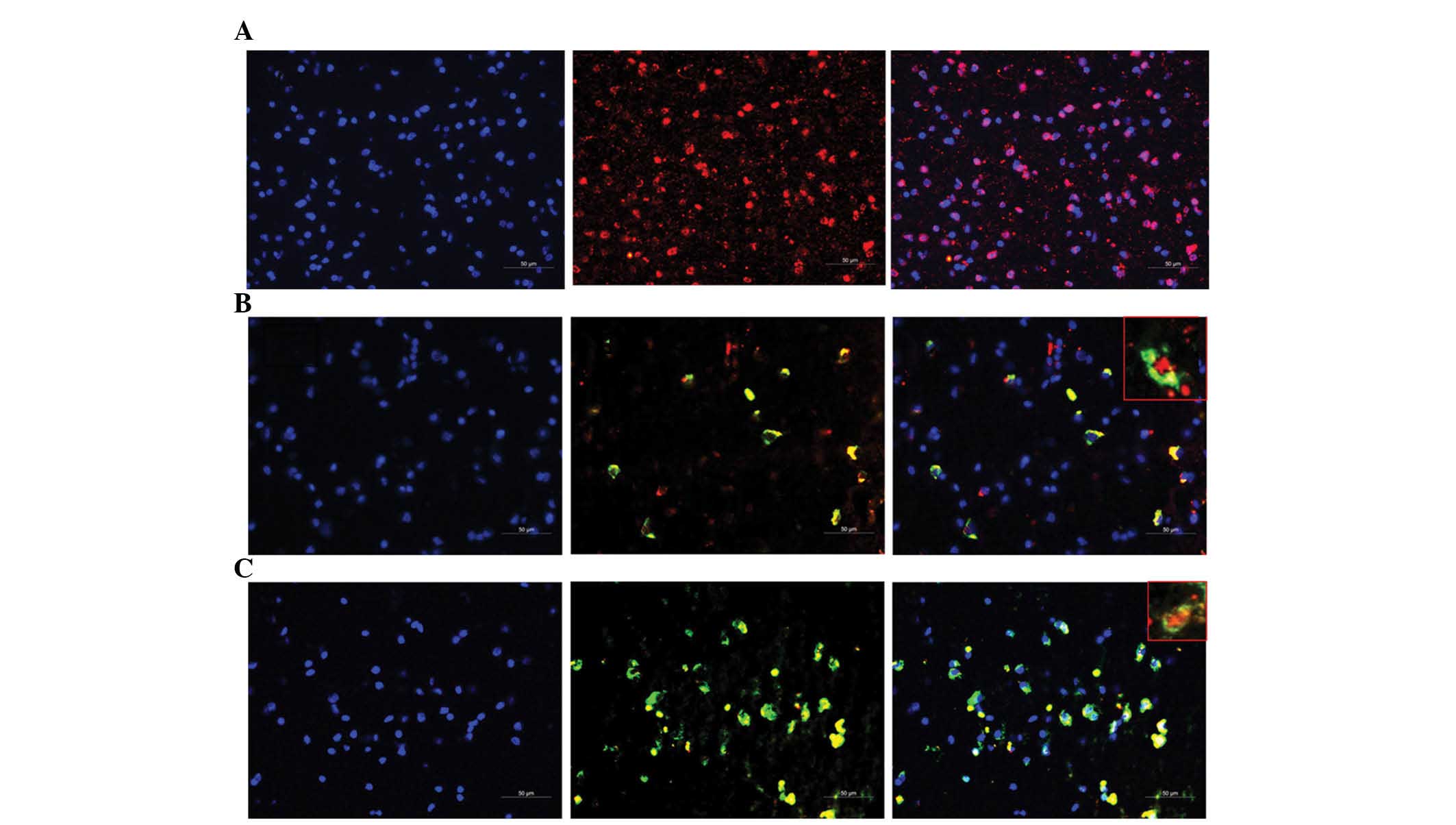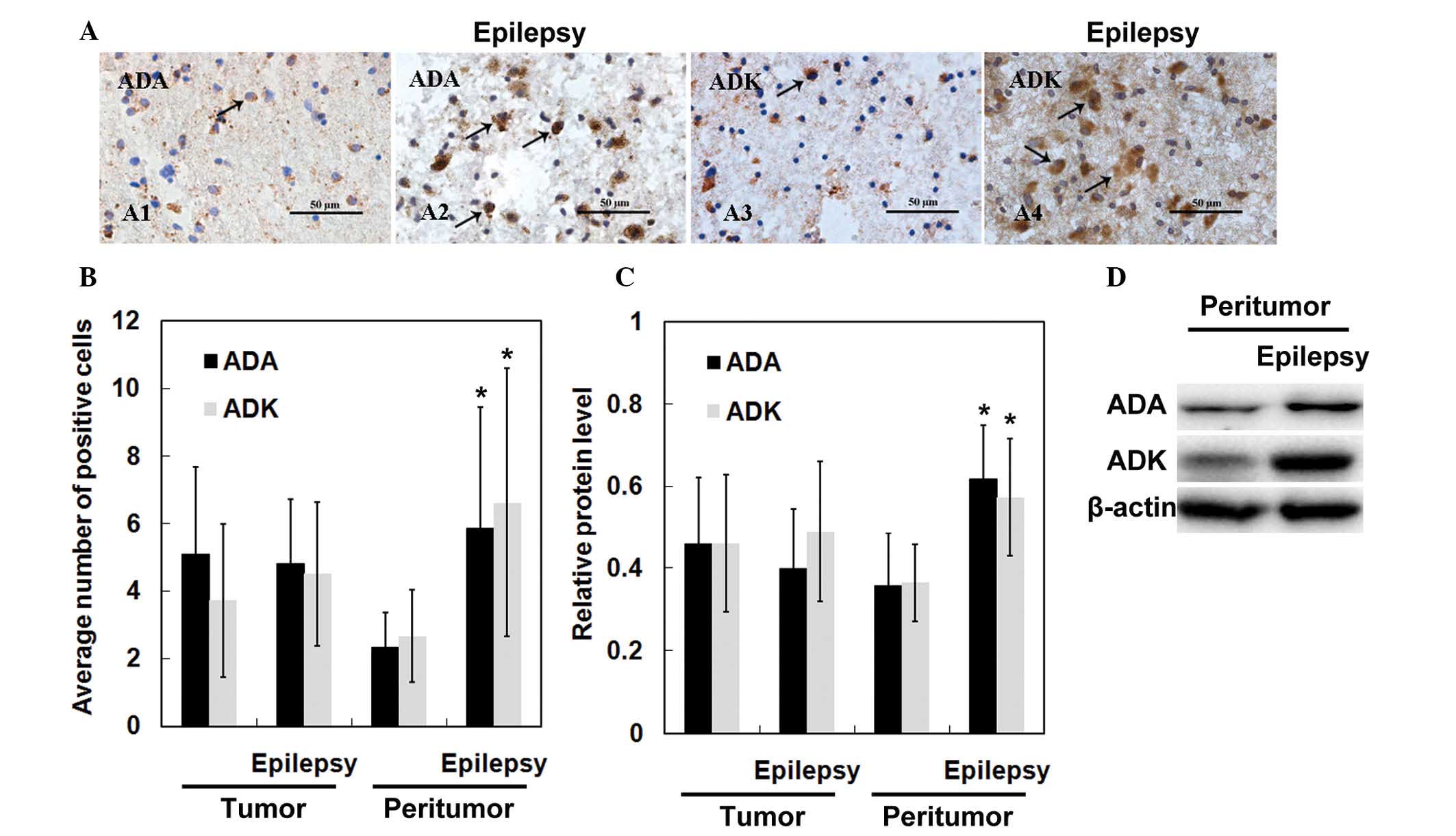|
1
|
Pace A, Bove L, Innocenti P, Pietrangeli
A, Carapella CM, Oppido P, Raus L, Occhipinti E and Jandolo B:
Epilepsy and gliomas: Incidence and treatment in 119 patients. J
Exp Clin Cancer Res. 17:479–482. 1998.
|
|
2
|
Behin A, Hoang-Xuan K, Carpentier AF and
Delattre JY: Primary brain tumours in adults. Lancet. 361:323–331.
2003. View Article : Google Scholar : PubMed/NCBI
|
|
3
|
Pallud J, Audureau E, Blonski M, Sanai N,
Bauchet L, Fontaine D, Mandonnet E, Dezamis E, Psimaras D, Guyotat
J, et al: Epileptic seizures in diffuse low-grade gliomas in
adults. Brain. 137:449–462. 2014. View Article : Google Scholar : PubMed/NCBI
|
|
4
|
Berntsson SG, Malmer B, Bondy ML, Qu M and
Smits A: Tumor-associated epilepsy and glioma: Are there common
genetic pathways? Acta Oncol. 48:955–963. 2009. View Article : Google Scholar : PubMed/NCBI
|
|
5
|
Lynam LM, Lyons MK, Drazkowski JF, Sirven
JI, Noe KH, Zimmerman RS and Wilkens JA: Frequency of seizures in
patients with newly diagnosed brain tumors: A retrospective review.
Clin Neurol Neurosurg. 109:634–638. 2007. View Article : Google Scholar : PubMed/NCBI
|
|
6
|
Stieber VW: Low-grade gliomas. Curr Treat
Options Oncol. 2:495–506. 2001. View Article : Google Scholar
|
|
7
|
Lee MC, Kim GM, Woo YJ, Kim MK, Kim JH,
Nam SC, Suh JJ, Chung WK, Lee JS, Kim HI, et al: Pathogenic
significance of neuronal migration disorders in temporal lobe
epilepsy. Hum Pathol. 32:643–648. 2001. View Article : Google Scholar : PubMed/NCBI
|
|
8
|
Aronica E, Gorter JA, Jansen GH, Leenstra
S, Yankaya B and Troost D: Expression of connexin 43 and connexin
32 gap-junction proteins in epilepsy-associated brain tumors and in
the perilesional epileptic cortex. Acta Neuropathol. 101:449–459.
2001.PubMed/NCBI
|
|
9
|
Yuen TI, Morokoff AP, Bjorksten A, D'Abaco
G, Paradiso L, Finch S, Wong D, Reid CA, Powell KL, Drummond KJ, et
al: Glutamate is associated with a higher risk of seizures in
patients with gliomas. Neurology. 79:883–889. 2012. View Article : Google Scholar : PubMed/NCBI
|
|
10
|
Boison D: Role of adenosine in status
epilepticus: A potential new target? Epilepsia. 54(Suppl 6): 20–22.
2013. View Article : Google Scholar : PubMed/NCBI
|
|
11
|
Boison D: Adenosine and seizure
termination: Endogenous mechanisms. Epilepsy Curr. 13:35–37. 2013.
View Article : Google Scholar : PubMed/NCBI
|
|
12
|
Hargus NJ, Jennings C, Perez-Reyes E,
Bertram EH and Patel MK: Enhanced actions of adenosine in medial
entorhinal cortex layer II stellate neurons in temporal lobe
epilepsy are mediated via A(1)-receptor activation. Epilepsia.
53:168–176. 2012. View Article : Google Scholar :
|
|
13
|
Boison D: Adenosine kinase: Exploitation
for therapeutic gain. Pharmacol Rev. 65:906–943. 2013. View Article : Google Scholar : PubMed/NCBI
|
|
14
|
de Groot M, Iyer A, Zurolo E, Anink J,
Heimans JJ, Boison D, Reijneveld JC and Aronica E: Overexpression
of ADK in human astrocytic tumors and peritumoral tissue is related
to tumor-associated epilepsy. Epilepsia. 53:58–66. 2012. View Article : Google Scholar :
|
|
15
|
Siebel AM, Piato AL, Schaefer IC, Nery LR,
Bogo MR and Bonan CD: Antiepileptic drugs prevent changes in
adenosine deamination during acute seizure episodes in adult
zebrafish. Pharmacol Biochem Behav. 104:20–26. 2013. View Article : Google Scholar : PubMed/NCBI
|
|
16
|
Louis DN, Ohgaki H, Wiestler OD, Cavenee
WK, Burger PC, Jouvet A, Scheithauer BW and Kleihues P: The 2007
WHO classification of tumours of the central nervous system. Acta
Neuropathol. 114:97–109. 2007. View Article : Google Scholar : PubMed/NCBI
|
|
17
|
Livak KJ and Schmittgen TD: Analysis of
relative gene expression data using real-time quantitative PCR and
the 2(-Delta Delta C(T)) Method. Methods. 25:402–408. 2001.
View Article : Google Scholar
|
|
18
|
Jinnah HA, Sabina RL and Van Den Berghe G:
Metabolic disorders of purine metabolism affecting the nervous
system. Handb Clin Neurol. 113:1827–1836. 2013. View Article : Google Scholar : PubMed/NCBI
|
|
19
|
Bardot V, Dutrillaux AM, Delattre JY, Vega
F, Poisson M, Dutrillaux B and Luccioni C: Purine and pyrimidine
metabolism in human gliomas: Relation to chromosomal aberrations.
Br J Cancer. 70:212–218. 1994. View Article : Google Scholar : PubMed/NCBI
|
|
20
|
Castillo CA, León D, Ruiz MA, Albasanz JL
and Martín M: Modulation of adenosine A1 and A2A receptors in C6
glioma cells during hypoxia: Involvement of endogenous adenosine. J
Neurochem. 105:2315–2329. 2008. View Article : Google Scholar : PubMed/NCBI
|
|
21
|
Ohkubo S, Nagata K and Nakahata N:
Adenosine uptake-dependent C6 cell growth inhibition. Eur J
Pharmacol. 577:35–43. 2007. View Article : Google Scholar : PubMed/NCBI
|
|
22
|
Swiader MJ, Kotowski J and Łuszczki JJ:
Modulation of adenosinergic system and its application for the
treatment of epilepsy. Pharmacol Rep. 66:335–342. 2014. View Article : Google Scholar : PubMed/NCBI
|
|
23
|
Pence S, Erkutlu I, Kurtul N, Bosnak M,
Alptekin M and Tan U: Antiepileptogenic effects of glutathione
against increased brain ADA in PTZ-induced epilepsy. Int J
Neurosci. 119:616–629. 2009. View Article : Google Scholar : PubMed/NCBI
|
|
24
|
Shen HY, Sun H, Hanthorn MM, Zhi Z, Lan
JQ, Poulsen DJ, Wang RK and Boison D: Overexpression of adenosine
kinase in cortical astrocytes and focal neocortical epilepsy in
mice. J Neurosurg. 120:628–638. 2014. View Article : Google Scholar :
|
|
25
|
Boison D: Adenosine augmentation therapies
(AATs) for epilepsy: Prospect of cell and gene therapies. Epilepsy
Res. 85:131–141. 2009. View Article : Google Scholar : PubMed/NCBI
|
|
26
|
Huber A, Padrun V, Déglon N, Aebischer P,
Möhler H and Boison D: Grafts of adenosine-releasing cells suppress
seizures in kindling epilepsy. Proc Natl Acad Sci USA.
98:7611–7616. 2001. View Article : Google Scholar : PubMed/NCBI
|
|
27
|
Güttinger M, Padrun V, Pralong WF and
Boison D: Seizure suppression and lack of adenosine A1 receptor
desensitization after focal long-term delivery of adenosine by
encapsulated myoblasts. Exp Neurol. 193:53–64. 2005. View Article : Google Scholar : PubMed/NCBI
|
|
28
|
Güttinger M, Fedele D, Koch P, Padrun V,
Pralong WF, Brüstle O and Boison D: Suppression of kindled seizures
by paracrine adenosine release from stem cell-derived brain
implants. Epilepsia. 46:1162–1169. 2005. View Article : Google Scholar : PubMed/NCBI
|
|
29
|
Fedele DE, Koch P, Scheurer L, Simpson EM,
Möhler H, Brüstle O and Boison D: Engineering embryonic stem cell
derived glia for adenosine delivery. Neurosci Lett. 370:160–165.
2004. View Article : Google Scholar : PubMed/NCBI
|



